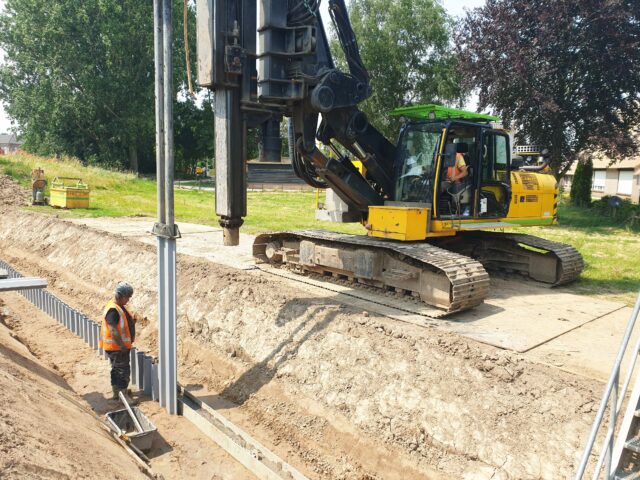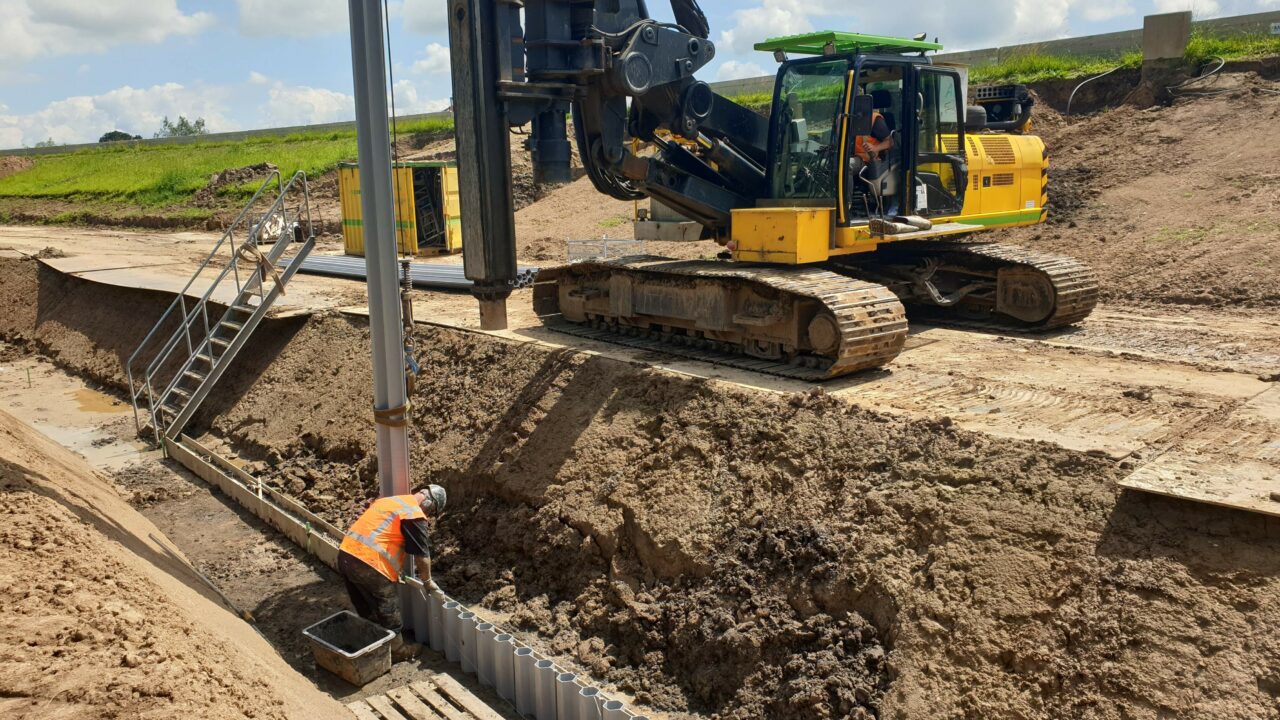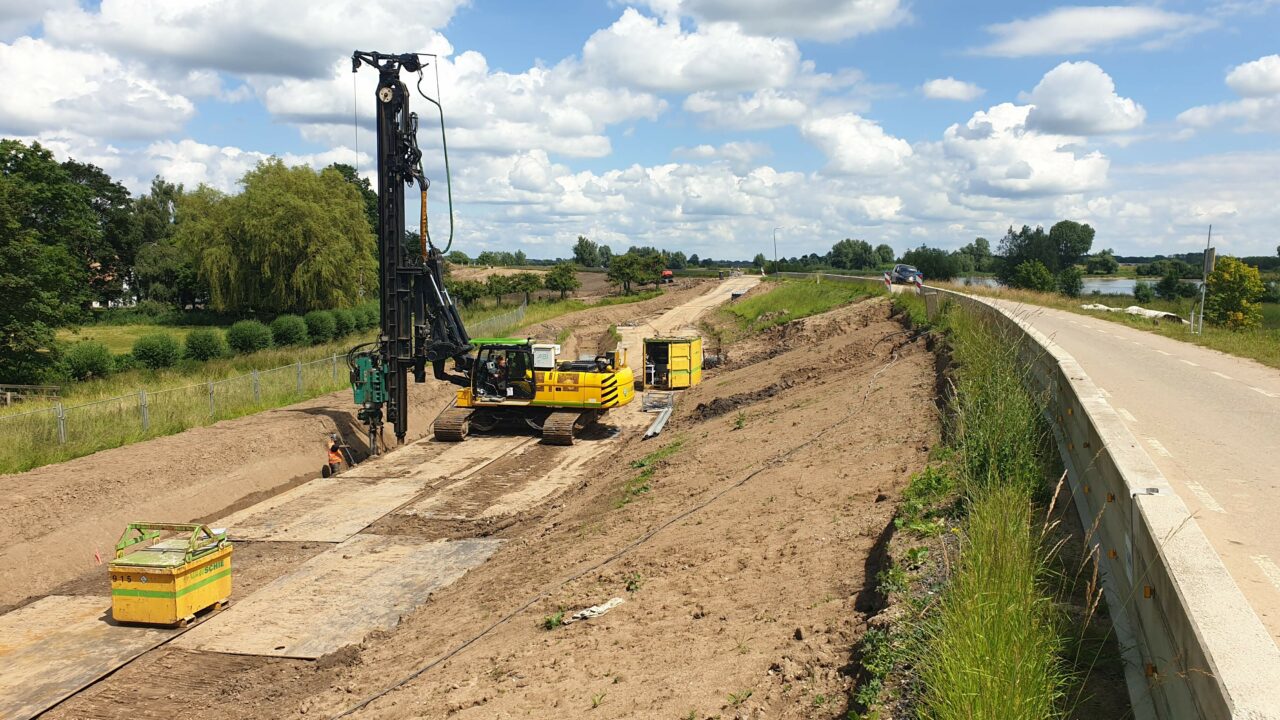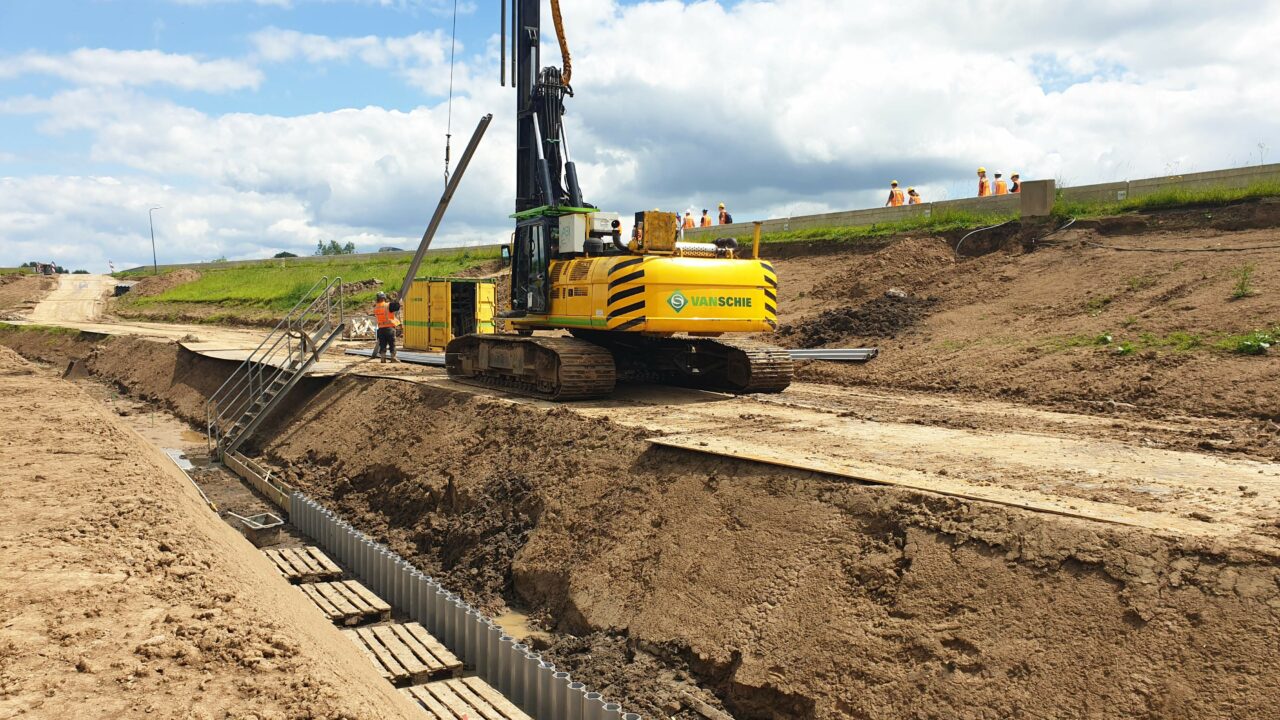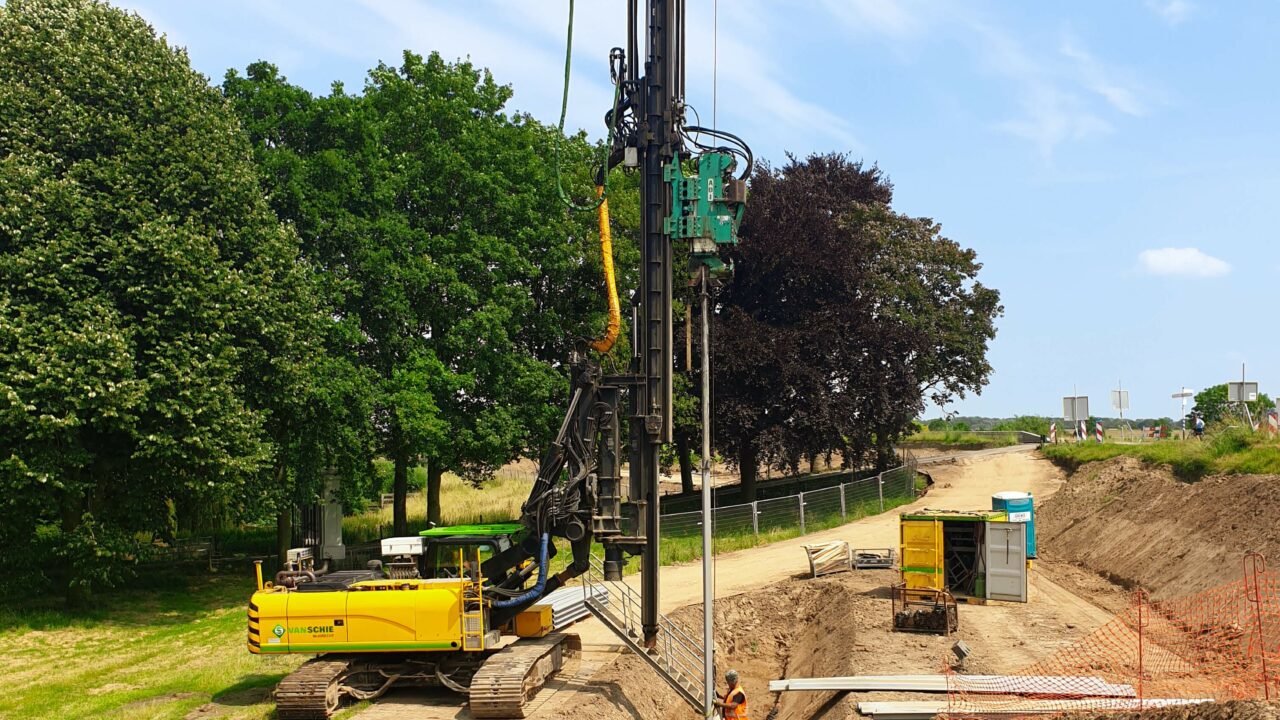Due to climate change, we face more frequent and longer high water in our rivers. That is why dikes are now being reinforced all over the Netherlands. This is also the case between Amerongen and Schoonhoven, where the northern dike along the Lek River is being thoroughly tackled over a distance of 55 kilometers. At the most vulnerable point – around the Salmsteke floodplain – an innovative technique is now being applied to prevent so-called ‘piping’. Piping is a process whereby water under pressure from the high river water level flows under the dike, taking sand and soil particles with it. This creates ‘tunnel-like’ hollow spaces in the subsoil that can lead to subsidence, shifting of the inner embankment and even dike failures. Mourik – together with engineering firm ABT and Profextru Produktie BV – has now developed the Prolock Filter Screen, a further development of the existing Prolock Delta Screen. It is a modular system consisting of sections of recycled plastic, which can be easily slid together from above. Using vibration technology, Van Schie pressed them into the ground to a depth of eight meters on average over a total length of 800 meters, directly behind the inner embankment. The ‘Salmsteke’ project is in fact a test setup, but the results are promising. The narrow tubes that make up the screen are perforated and filled with filter sand. In this way, the natural sand present is held back, but at the same time the groundwater flow is not hindered. At the top of the screen, a lockable screw cap is placed on each tube. The beauty of this principle is that its operation does not depend on river water levels or sea level rises. The whole system is a lot more durable and cheaper than steel sheet pile walls, for example. Moreover, it takes up little space and there is less inconvenience to the surrounding area during installation.
Historical fact
The Lekdijk is 900 years old. Its construction began in 1122, immediately after the damming of the Rhine at Wijk bij Duurstede. The lands on either side of the Lek had to be protected then. Over the years, the dike has been raised in stages. Once it was three meters high, now it rises 6 to 7 meters above ground level, but is still not high enough in some places. So it has to be higher. That too will be worked on in the coming years.


